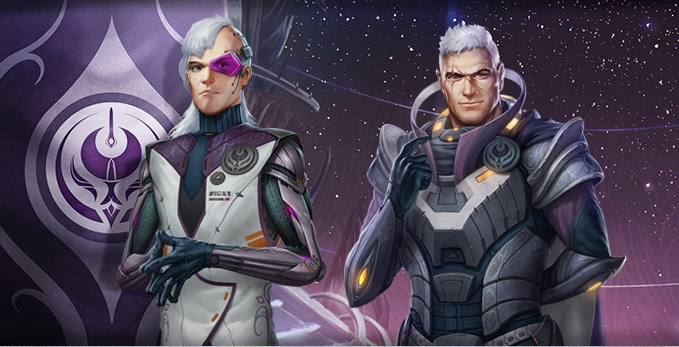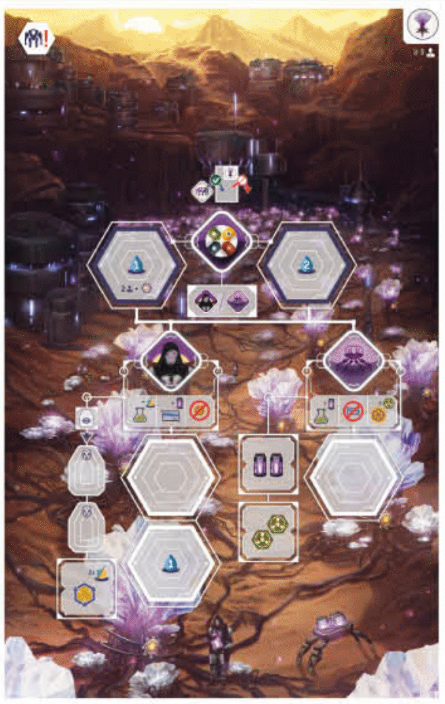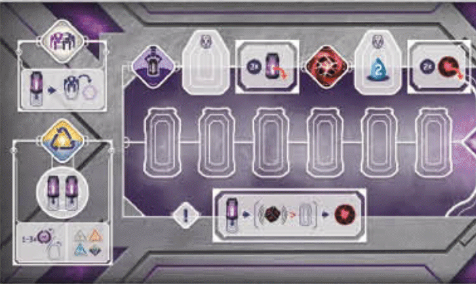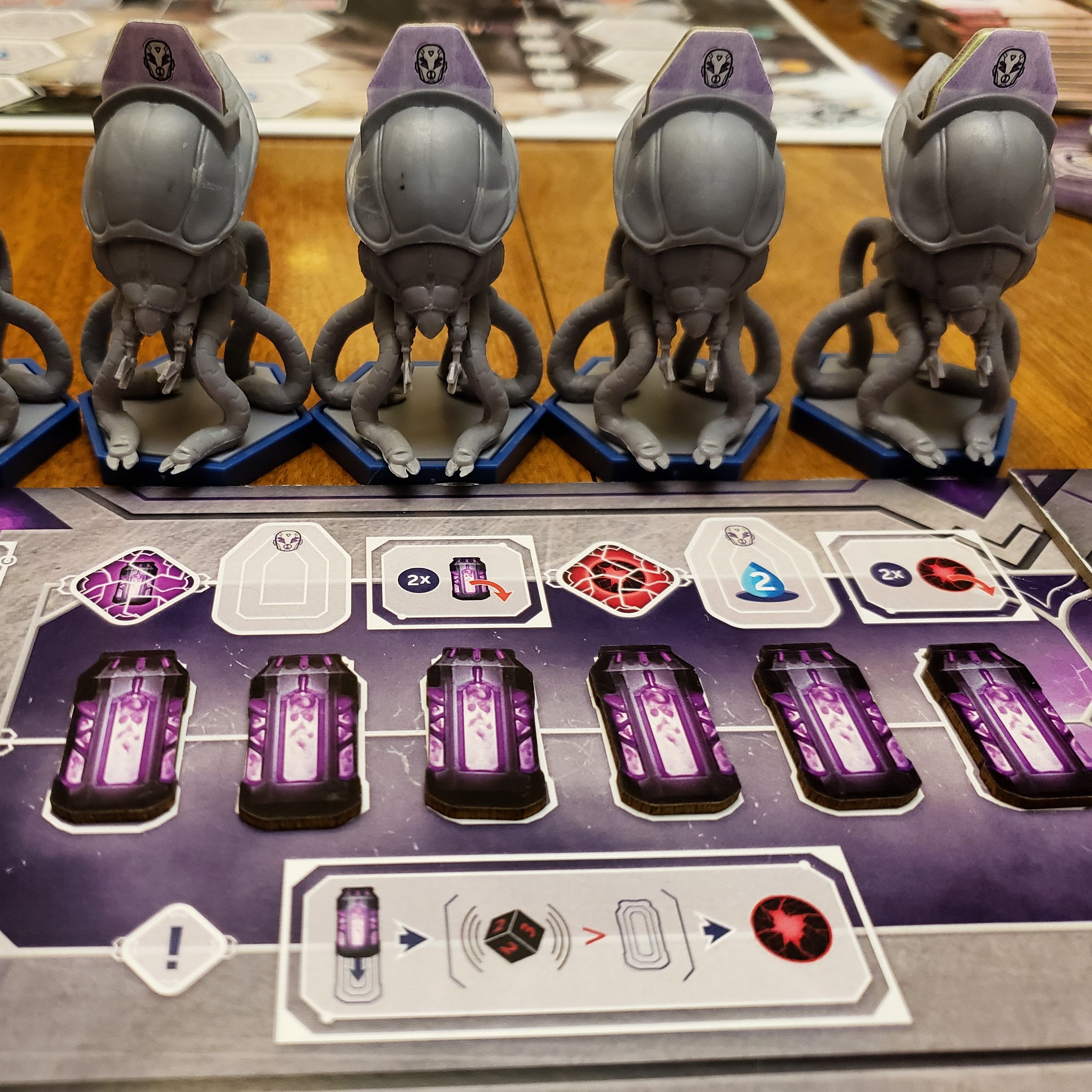Time travel is a strange, wonky topic that has no shortage of theories and debates as to how it would work were it possible. Is time travel a one-way thing? Can you change the past in going back or is the outcome predetermined because it already happened? If you do alter the past, how do you represent the repercussions of those decisions? If you went back and killed one of your ancestors before they had children…well, you get the idea. Time travel is confusing and madding at the best of times the more you get in the weeds with its myraid possibilities, but it’s also why it makes for such common and enjoyable scifi. At least, if it’s done right.
Bringing those concepts to a game can likewise be tricky. It can be a challenge to decide which facets you want to include in the game and which ethos you want to embrace. You want to make a game that doesn’t get lost in the theme but don’t want to abstract it so much that people feel it lacking in its central premise. Of the most notable time travel games out there, each embraces some part of the genre that makes their game unique and entertaining. With Anachrony, the second title by Mindclash Games, that involves creating causality loops around collecting resources. That is, each round you have the ability to simply request a handful of resources from the future and they will suddenly appear. However, at some later point in the game, you must expend effort to send those very same resources back to yourself in a prior time period or risk some major VP penalties at the end of the game. While it’s not the most central part of this worker placement game, its presence and integration into the flow of each round is enjoyable and appreciable in a time travel game.
Anachrony has been out for a couple years and has reached much acclaim in the gaming world for its theme, its gameplay, and yes, its components. We touted its praises for its original Kickstarter, and it even was a 2017 Laurel nominee. All with good reason. Anachrony is a dazzling and sizable medium-weight game just waiting to be deciphered. With numerous areas to focus on, a pool of workers to manage, and a tight resource economy, it’s a splendid temporal puzzle worth exploring.
Apparently, that idea is worth doubling down on, because earlier this month Mindclash Games launched its first major expansion, Anachrony: Fractures of Time.
While we weren’t able to write up a formal preview prior to its Kickstarter, we were lucky to get our hands on a prototype of the expansion since its launch and wanted to share some quick thoughts on it down prior to the end of the campaign. So here goes.
Fractures of Time is a new expansion that considers an alternate timeline in which the future of New Earth played out a little differently. Here, the existing Paths encountered a previously unknown faction – the Path of Unity – with some fancy previously unseen tech that they’re willing to share. All of this is reflected in the game with a new playable faction, a new location board, a new worker type, a new resource, and a brand new mechanic called Blinking.
Basically, this new faction has technology that allows you to spend a rather timey-wimey resource called Flux as an action rather than placing a worker. In doing so, it permits you to move (Blink) an existing worker from the main board to another space and use that worker a second time. This worker is then immediately sent to the the tired pool (as dimensional jumping is exhausting…we hear), though the exosuit stays put, blocking its use per usual.
This provides a host of new possibilities and tactical decision-making opportunities towards chaining actions together in efficient ways and getting further use out of your limited worker pool. For all of its laudable aspects, Anachrony’s worker placement system is pretty standard in placing one worker and, barring a special Building action, leaving them there until the end of the round, but Blinking shakes the normal flow up a bit by giving you additional mileage out of workers and potentially opening up locked out spaces for use again later – unless someone beats you to them.
The catch is that Flux is, well, a bit unstable. And unless the worker you use is an Operator (a new worker that behaves as a wild / Genius but gains none of the board bonuses) you risk Glitching, which is tracked on a miniboard for each player. Every time you spend Flux it is added to this board, filling up its empty Flux spaces. Essentially, the more you use Flux, the more dangerous Blinking becomes. This is denoted by rolling a die. If that number is greater than your board’s empty Flux spaces, you’ll have to add random Glitches to your tableau – which lock out those spaces until they’re removed. The expansion offers ways to mitigate the danger of Flux with action spaces that remove them from your board and / or spending Breakthrough tiles to expand the number of Flux spaces (while also generating endgame VP), but like any extensive expansion material, investing in and embracing Blinking as a major focus means one less avenue you’ll be able to focus on elsewhere. So while it’s cool to jump around Wreck it Ralph Vanellope style, it’s not without drawbacks.
Fractures of Time opens whole new avenues of strategy, and these elements shake up your ability to plan in curious and refreshing ways. The ability to acquire Operators helps smooth out the routine dash for Geniuses, for instance, and new Upgrade cards work essentially as a 5th Building type, providing a range of in-game and endgame bonuses. But contemplating these new contributions also adds time to your plotting and planning – as more options are oft to do. Fractures of Time recognizes this and (mostly) offsets this by reducing the number of rounds in the game by one, but FoT still creates a lot new information to process.
In all, Anachrony: Fractures of Time is an appealing contribution to the lore and feel of the game, carving out new concepts to explore and exploit to your advantage. That said, the added degree of complexity Fractures adds to this worker placement gem isn’t going to make it an automatic Must Have for everyone – especially those who already find the base game either too daunting or those who feel the core game is perfect enough as it is. But for those who want to navigate some new twists to this futuristic temporal landscape, they’ll want to Blink on over to the Kickstarter before it’s too late.
Well, unless you can time travel. In which case, just jump ahead to a point where the game is finished already…
Photo Credits: Anachrony cover and artwork by Mindclash Games.




